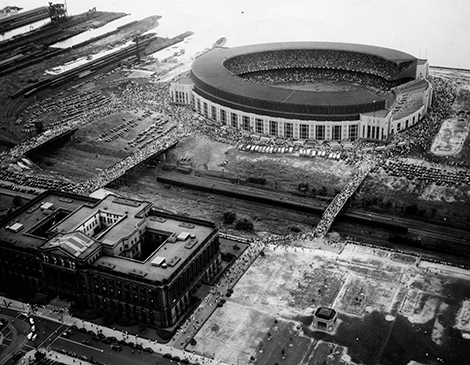During any serious discussion about Cleveland Municipal Stadium, the one-time home to the Cleveland Indians (1932-1993) and Cleveland Browns (1946-1995), the topic of why the stadium was built often pops up.
Eventually, some know-it-all pipes up that the lakefront stadium, demolished in 1997, was built to attract the 1932 Summer Olympics that eventually ended up in Los Angeles.
Based on the fact that it could house more than 78,000 and was completed a year before the event, it’s easy to understand why the long-held belief that the stadium was a perfect Olympics venue seeped into the city’s folklore.
But longtime Plain Dealer sports writer and author Terry Pluto says not so fast. For his 2010 book Things I’ve Learned from Watching the Browns, he scoured The Plain Dealer archives searching for any evidence to support the claim.
Pluto cites an Aug. 1, 1928, Los Angeles Times story about the Olympics being awarded to the City of Angels. In fact, the official 1932 Olympics report published in 1933 states that the Olympic Committee considered LA as early as 1923.
Clevelanders didn’t vote on the bond issue to build Municipal Stadium until Nov. 6, 1928. Pluto says he found some sweeping general references to other reasons for having a bigger stadium on the lakefront, such as providing a venue for high school football games and boxing matches.
“[It] was also a more centralized location for fans to watch the Cleveland Indians play instead of making a long trek clear across town to League Park in the congested Hough neighborhood,” he says.
Status: Busted
Read More: Click here to read the full list of 30 Myths That Define Cleveland

CLE Myths: Cleveland Municipal Stadium's Olympic Bid
Was the lakefront home to the Browns and Tribe built to attract the 1932 Olympics?
in the cle
8:00 AM EST
November 25, 2019



